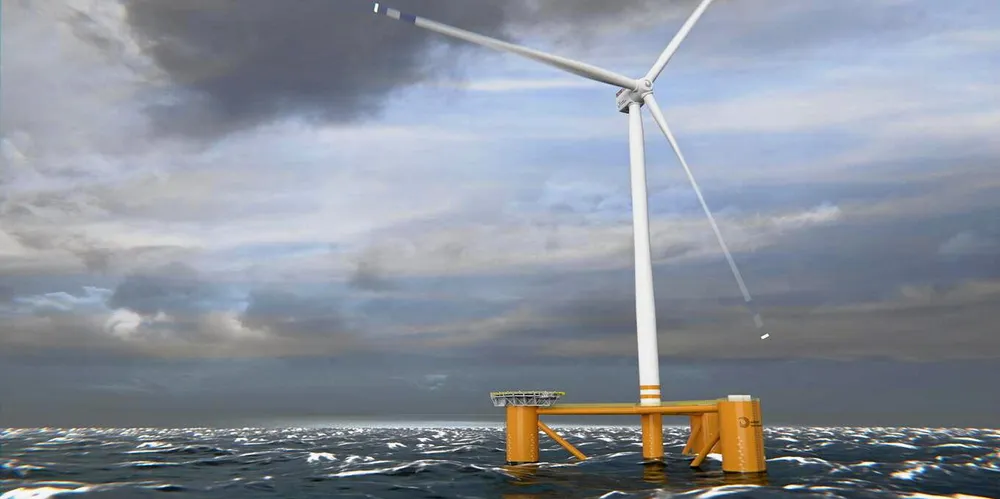Fearless symmetry | Upscaled Odfjell floating wind giant launched to brave waves 'from 2025'
Norwegian outfit unveils 15MW Deepsea Star triangular semisub concept with redesign positioning turbine tower at centre of platform rather than over one column

Norwegian offshore engineering outfit Odfjell Oceanwind has launched a giant 15MW floating wind design with the turbine tower eye-catchingly positioned in the centre of the platform – rather than over one of the three columns – that it believes will be a give a boost to development of future gigascale arrays in Europe’s northern seas.
The company, which has received so-called basic design approval (BDA) from DNV for a 12MW concept dubbed Deepsea Semi, sees the newly unveiled Deepsea Star “making floating wind relevant for larger utility scale wind parks and… a significant contribution to lowering the LCOE [levellised cost of energy] in the coming years”.
“With the Deepsea Star we have compiled Odfjell’s 50 years [of] learnings from operating semisubmersible structures in harsh environment conditions with 20 years’ experience in designing floating wind solutions,” said Per Lund, CEO of Odfjell Oceanwind, a spin-out of transitioning offshore oil & gas drilling contractor Odfjell.
The novel column-stabilised steel semisub design, currently undergoing a BDA based on a Siemens Gamesa’s 14MW SG14-236DD including model tanks tests for “the harshest environment locations”, is expected to be ready for market “from 2025 onwards”.
“Having a BDA qualified design for 15MW [wind turbines] and a multi-locational, harsh environment design basis offer developers of seabed leases in tough locations to potentially cut significant time and reduce risk in their development programmes,” said Lund, pointing to sites including in Scotland’s Scotwind and INTOG rounds and Norway’s and Utsira Nord.
The decision to redesign the floating wind concept with the tower in the middle of the platform was prompted by early engineering work on the smaller 12MW design, said Odfjell Oceanwind CTO Eystein Borgen
“We realised that it will be challenging to scale a semisubmersible floater with the [wind turibine] in the corner beyond 15MW, for a number of reasons,” he said.
“The centre tower reduces the required displacement which gives many benefits like reduced draft at quayside, lower environmental loads acting on the structure and reduced overall steel weight.
“Furthermore, it enables installation of tower and turbine on a floating structure. The bracing structures transfers the loads efficiently between the satellite columns and the tower… loads [which] are extreme for harsh environments and large [wind turbines]… in cross-sea waves and ‘split forces acting between the columns, torsion loads from the tower and mooring line failures.
Borgen added that the symmetric design would “simplify the supply chain and lend itself well to mass production, lowering the unit cost and increasing the supply chain efficiency… to develop large wind parks in short time frames.”